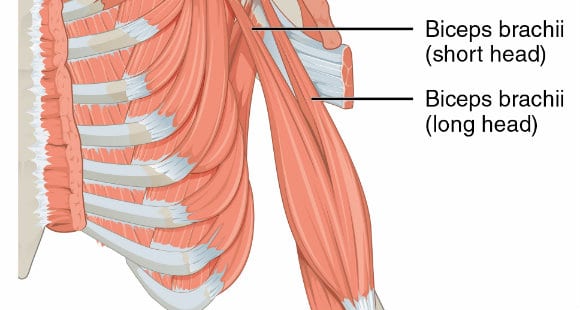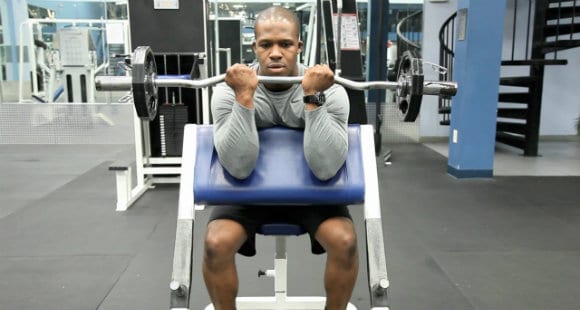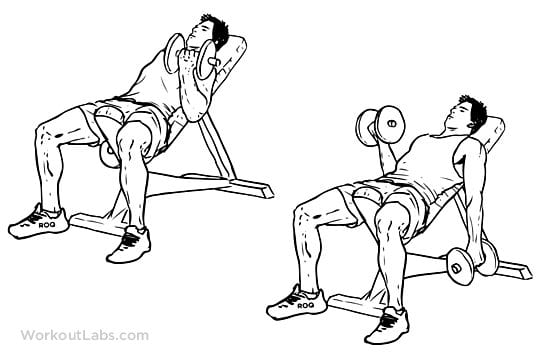By healthiergang writer , former competitive athlete and currently Bodybuilding athlete (Bikini category).
Brachial biceps
Il biceps, the sacred monster of the gym, the starting point of every boy who crosses that threshold and the antagonist par excellence of us poor women.
This muscle, apparently simple to train, in truth represents a valid adversary when it is necessary to look for specific works to improve it.
I have had several athletes who have presented with a deficiency of this muscle and, in fact, I myself have had initial difficulties in improving it. However, we must not give up, here are some tips to set up a 360-degree job.
A little anatomy
Let's start with a little anatomical lesson. I know I can be boring but forgive me, I am a technique in the sector and it is my duty (I can not say pleasure) to intervene in this sense.
The biceps brachialis is the main flexor muscle of the arm. It consists of two items:
1. Long head. With insertion into the supraglenoid tubercle of the scapula, it runs inside the joint capsule of the shoulder, on the head of the humerus and finally reaches the bicipital groove.
2. Short head. Instead, it originates in the apex of the coracoid process [1]
The long head is the one in the lateral position while the short one is placed medially. Basically while the first is external, the second is located inside the arm.
Function
Il brachial biceps has several functions. Mainly that of flexing and supinating the forearm on the upper arm. We are all familiar with the flexion movement. As far as the supination is concerned, it is the movement that you can assist in the moment in which you bring the palm of your hand from the bottom upwards [1].
Learning the functions of the muscles is extremely useful so that you can best learn the correct execution of the movements so focus these movements well before starting your session!
ROM
Let's do some more theory by going to talk about ROMs. The ROM is the range of motion [2] ie the angle of motion. When we do a dumbbell curl our ROM is just under 180%. We start with the elbows extended and close the movement with the elbows flexed.
In the exercises the ROM varies, partly because the muscle mass or the working angle will decrease the possibilities, partly because, in certain cases, we are the ones who want to limit it. We will return to this aspect, for now we just have to take home the concept of what we mean when we talk about Range of Motion.

Working angle
The working angle is the angle we choose to use when setting up an exercise. It is a generic concept that applies to different areas, but in this case we mean the angle of the glenohumeral joint. Basically the one formed by the shoulder and arm [3].
Why is it useful to consider the working angle?
We have seen that the bicep fits, in a nutshell, on the shoulder. Consequently, a variation of the angle will lead to a modification of the starting position of the muscle.
This can therefore work in pre-stretching (eg curl on an inclined bench) or in pre-shortening (eg scott curl). Also in this case we will get to know the usefulness of this notion later, now we are at school, we only learn!
"Academic" Exercises
Let's now see how to apply these notions to best set up a workout. We will see, specifically, 3 exercises which will trace the main biomechanical concepts we have seen.
#1 Scott Curl
In this exercise the muscle starts in pre-shortening. The humerus is in fact flexed with respect to the shoulder joint, consequently the biceps will be less stretched.
This makes the exercise very interesting for jobs that focus on finding what the States call "squeezing", essentially a peak of contraction. The working angle that we will prefer will therefore be the one in maximum shortening, green light to techniques such as the peak of contraction (POC) or the double impulse with focus on the final phase of the movement.

However, it must be said that in scott curl we have the advantage of a tension even at the starting point of the movement (elbows extended). Adding a loss of tension in the final part, one could deduce the uselessness of the techniques seen above.
This is true, in fact the best variant of the scott curl is represented by the replacement of the barbell with the low cable. In this way the tension will remain constant in the chosen range of motion and above all present at the point of maximum contraction.
# 2 Inclined Bench Curl
This exercise involves a completely opposite angle of movement to the previous one. In fact, we will start from a pre-stretch position. Also in this case, the use of cables can be advantageous if not for the fact that, except for finding the right angle (and believe me, it took me some time myself!), There will be a strong involvement of the anterior deltoid and of the whole the stabilizing muscles of the joint.

An interesting variant involves the use of elastic bands (bands loading) going to insert them under the bench. In this way there will be no loss of tension and a greater load in the final part of the movement.
As for the techniques, all types of stretch are interesting, therefore between sets or repetitions. 1 or 2 seconds of isohold (isometric hold) can really help.
#3 Cross Hammer Curl
It is a Curl with a neutral grip (hammer, hammer) which however requires a diagonal movement of the arm. We will therefore not work on the sagittal plane but we will move towards the frontal one. In this way we will retrace the exact physiological trajectory of the arm with a strong benefit of the joints.
The neutral grip does not allow the biceps to be supinated and, therefore, to arrive in maximum shortening. However, it allows you to lift a greater load, the advice is therefore to use this exercise when you are looking for a strong mechanical stress and to go, instead, to use the variant with supination (Cross Curl) to search for more metabolic stress (with insertion of specific techniques of the case).
Conclusions
The biceps are certainly a very hostile muscle group, they must be known to manage at best but they are without a shadow of a doubt one of the most exciting muscle groups to analyze. I personally hate them, madly, but I do not let myself be discouraged and I experiment at best to find valid alternatives in the work. As usual, a little imagination (and basic knowledge!) Is enough.


























